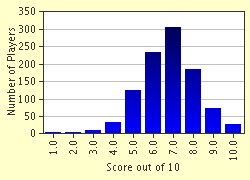Quiz Answer Key and Fun Facts
1. We shall begin with an easy one. This punctuation mark is used to divide and/or join words and numbers, i.e. Moholy-Nagy and Catch-22. We sometimes get away with calling it a dash (especially if we're using Morse Code) or the minus (subtraction) sign, but what is the more 'official' name for this little fellow?
2. If one has just employed a sign symbolizing 'ecphonesis' or 'epiphonema'...which of the following has one utilized?
3. The * sign is an oft-used one, employed as a reference mark, for example. We use the term 'asterisk' to describe this extremely useful little symbol...but what does the word mean in its original Greek?
4. Here's a very simple one...what does a long string of literary symbols used side by side i.e., *&@#!#%, usually signify in literature?
5. Back to questions of a more serious nature...often we use symbols like the one above the e in 'André' for accent or stress. What is this (´) rising accent marker called?
6. What is the term we use to describe these [ ]?
7. Which of these signs/symbols has the same name as a body part?
8. A bar (¯) is often used above vowels to indicate the long vowel sound. What is this bar called?
9. Which of these symbols had its origins in the Latin word "et"?
10. Which symbol is utilized in an English interrogative sentence?
Source: Author
thejazzkickazz
This quiz was reviewed by FunTrivia editor
profchallenger1 before going online.
Any errors found in FunTrivia content are routinely corrected through our feedback system.

